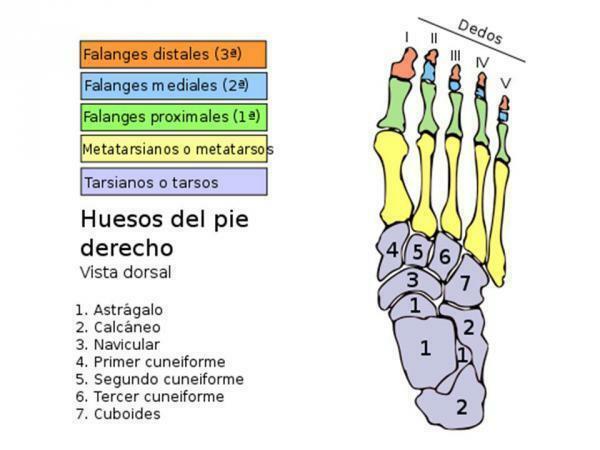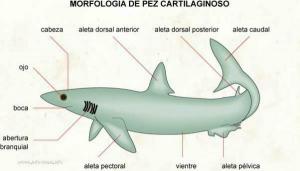Names of the leg bones
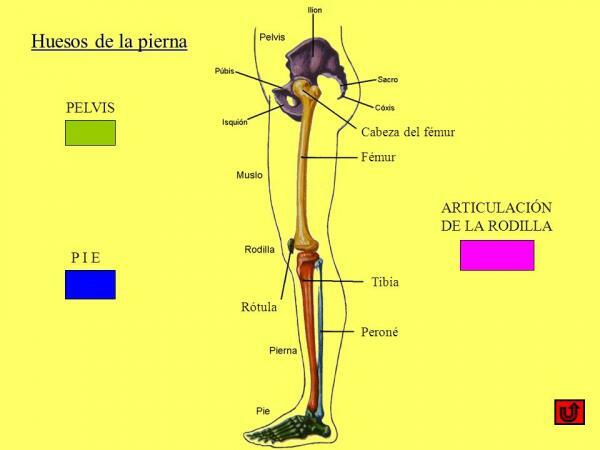
Image: Slideplayer
In the human body, bones are a fundamental rigid support that, in addition to providing shape to the body, allows it to perform movements and all kinds of functions. The bones of the leg, among which stand out the femur, tibia and fibula, They basically serve as levers that allow muscles to push the body forward or bend over to pick up objects.
In this lesson from unPROFESOR.com we are going to study the names of the leg bones, which make up the most important joint for human movement.
The femur is the only bone in the thigh, being the longest and strongest in the human body. In it, several parts can be distinguished:
- Head: the upper end of the femur has a round head that articulates with the socket of the pelvis.
- Neck: unites the head with the body of the femur. It forms an angle of about 125º that facilitates the movement of the hip. Its length is about 5 cm and in it there are holes for the entry of blood vessels.
- Body: the intertrochanteric line is located at the junction between the neck and the body of the femur, and joins two bony accidents: the greater and lesser trochanter. The trochanters are prominences where the muscles are supported.
In the lower area of the femur there are two condyles, which allow the hinge joint of the knee. In it is the patella, a short bone and flattened that is driven from front to back, and develops in the tendon of the quadriceps muscle.
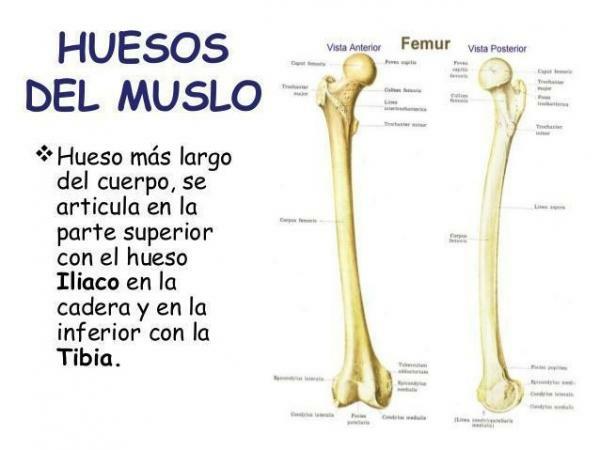
Image: Slideshare
The leg per se is made up mainly of two bones: tibia Y fibula.
The tibia is a long bone which is located in the anterior and internal area of the limb. It supports the weight of the leg and has wide extremities, especially those above, to receive the condyles of the femur, with natural reinforcements: the lateral tibial condyles. We can distinguish several parts:
- Body: It has three faces, internal, external and posterior, and three borders, anterior, interosseous and internal.
- Lower end: In this one, the internal malleolus stands out, which forms a prominence in the inner area of the ankle and which articulates with the talus. On the other hand, the anterior aspect of the tibia is smooth and bulging, separated by an external groove, and the external portion is triangular and is attached by ligaments to the lower area of the fibula.
The fibula is a long and even bone, thinner than the tibia, located parallel to it. It is located on the outer part of the leg and does not support weight but provides insertion to the muscles and aids in the formation of the ankle joint. In it we can distinguish the following parts:
- Head: On its upper face, a circular face can be distinguished that serves to articulate the lower area of the external condyle of the tibia. The vertex of the head is called the styloid process.
- External malleolus: In it we can distinguish two parts, a rough and rounded anterior face and a posterior face with an articular facet destined for the talus, which has a vertex pointing downwards.
- Fibula body: made up of three edges and three faces.
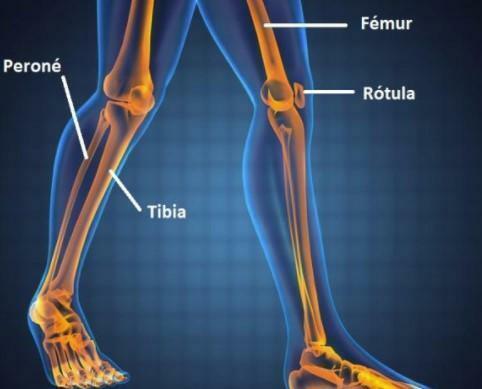
The foot is formed twenty six bones which are divided into three groups: tarsus, metatarsal and phalanges.
The tarsus It is the part of the foot that connects with the tibia and fibula, and is made up of seven bones: talus, calcaneus, navicular, cuboid and internal, middle and external cuneiforms.
The metatarsus meanwhile it is a set of five long bones, formed by a triangular prismatic body, which are numbered from one to five, the first being the one on the side of the thumb and the last the one next to the little toe of the foot.
By last, the phalanges are fourteen for each footThere are three for each finger except in the case of the thumb, which only has two. Are divided into proximal, middle and distal phalanx, not counting the thumb with middle phalanx.
